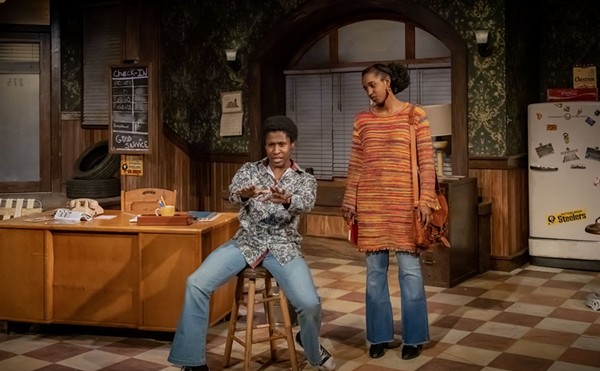The Cleveland Museum of Art has re-opened three galleries in its North Wing, marking the second-to-last "mile-stone" in the institution's eight-year expansion and renovation project. The sprawling $350-million project will finish this December with the unveiling of the West Wing. In the meantime, the northern galleries offer visitors centuries of artful objects from civilizations too often overlooked by curators.
The North Wing can be divided roughly into three sections: Native American, Islamic, and Japanese and Korean art.
The American galleries consist mostly of works from Central and South America, and at least one case with objects from the Pacific Northwest. Though many of the materials are difficult to date, the cultures and styles that produced the displayed objects span 3,500 years, from the earliest Mesoamerican civilizations originating in 1,600 BCE to the end of the 19th century.
The oldest pieces, from the Mesoamerican Olmec people, are also the most realist. Their smooth human figurines, chiseled or sculpted in albitite or ceramic, have expressive mouths and detailed finger and toenails. Later Mayan-style works from the same region are more ornate and stylized. The "Front Face of Stela," a larger-than-life limestone relief, depicts the ruler Lady T›abi wielding a scepter, shield and sweeping headdress.
The Islamic world is approached through its various textile traditions. Medieval Spain, India and the Arabic, Persian and Turkic cultures in between them are represented. Many tapestries manifest Muslim proscriptions against representational art with geometric patterning, which dazzle with colors and repetitiveness suggesting infinite inexhaustibility. However, some works buck the trend, such as a Mongol-era tapestry thick with lions, or an Indian covering in which the lotus appears.
The Japanese displays, like the Native Americans, take a long view of history. A pot of earthy color and rough, flame-like motifs curling over its surface and flickering over its rim is dated to 2,500 BCE, the Early to Middle Jomon period of prehistory. The vessel is remarkable both for its antiquity and its striking state of preservation.
However, much of the most striking work is from much later periods, after the development of Shinto and the introduction of Buddhism. Defining the represented history in terms of religion comes naturally, given the abundance of devotional objects.
A blackened wooden statue of the god Rgarjais gestures with six arms beneath a crown bearing the face of a beast. He is displayed between a thunder god and a heavenly general in exquisitely detailed armor. Nyorai, a Japanese interpretation of the Buddha, sits in a lotus with an aspect of perfect calm, counterpointed by the ferocity of the two wooden Nio sculptures. The protector figures were installed at the entrance of holy sites to intimidate wrongdoers with their mighty forms, with stylized chest muscles like bundles of pebbles.
The Korean exhibits, sponsored in part by the Korea Foundation, focus on fine objects from the Joseon dynasty. That kingdom's duration corresponds to the Western calendar years of 1392 to 1897 CE, and included the formation of the languages, customs and geographical boundaries of modern Korean civilization.
The era's most esteemed artistic legacy resides in its white porcelain. This tradition is represented by several elegant objects, including a jar wreathed in the coils of a dragon rendered in blue cobalt. The Korean galleries also contain the works most similar to Western-style figurative painting, with ink-on-silk portraits of Confucian scholars and noblemen and a tapestry depicting a bulging-eyed tigress and her kittens.
It would be impossible to make sweeping generalizations about displays from radically different cultures, organized by such different curatorial priorities, except to say that the CMA's picture of the world's material culture is that much richer by having them back.











